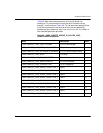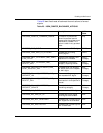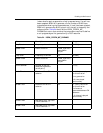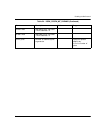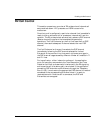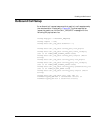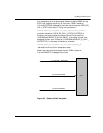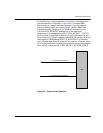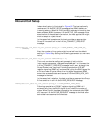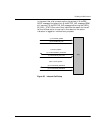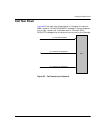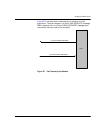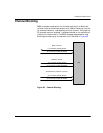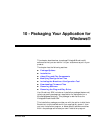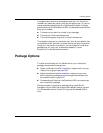
Enabling the R2 Protocol
November 2009 359
Inbound Call Setup
Inbound call setup is illustrated in Figure 55. The host optionally
receives an L3L4mPRE_SEIZE message when BSMI detects an
incoming seizure. When all DNIS and ANI address information has
been collected, BSMI issues an L3L4mSETUP_IND message. After
examination of the address information, the host application might
wish to accept or reject the call.
In the case of call acceptance, the host provides an appropriate
Group B line condition in the L4L3m_CONNECT_REQUEST
message,
l43msg.data.al_con_data.r2_call_status.group_B = IISDN_R2MFCP_LINE_FREE_NO_
CHARGE;
Also, the number of ring cycles might be varied from the default
setting in Table 19 by setting the following parameter to a non-zero
value,
l43msg.data.al_con_data.r2_call_status.numberRings = 2;
The trunk can also be configured to accept all calls via the
inter-register parameter “addressCompleteMode.” In this case, the
L4L3m_CONNECT_REQUEST message is still sent, although the
Group B code is not required. Following completion of R2 MF
register signaling, BSMI will automatically play the RING signal for
a finite number of cycles. When the ring signal completes, BSMI
enters the answered state and issues an L3L4mCONN_ACK_IND
message to the host.
In the case of call rejection, the host provides an appropriate Group
B line condition in an L4L3mCLEAR_REQUEST message,
l43msg.data.clr_data.r2_call_status.group_B = IISDN_R2MFCP_LINE_BUSY;
Following completion of R2 MF register signaling, BSMI will
automatically play the BUSY signal for an indefinite number of
cycles. When the call has been cleared by the outbound side, BSMI
will issue an L3L4mCLEAR_REQUEST message to the Host after
both sides have assumed the idle state.



